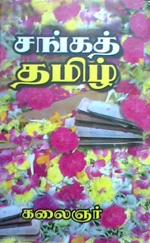The Sangam, the academy of Tamil men of
letters, used to meet periodically inMadurai to
discuss and review the research work of its members. The last of the three
Tamil Academies (Sangams) flourished in Madurai nearly two
thousand years ago.
The Pandyas, great patrons of
Tamil learning, art and architecture, were succeeded by the Nayaks, who not
only preserved the work of the earlier kingdoms but also enriched their
traditions.
The Sthalapurana speaks of 473 member - poets and three
sangams � Mudal Sangam ( first academy), Idai Sangam ( middle academy) and
Kadai Sangam ( last academy ). Legend has is that the literacy works submitted
to the sangam for assessment were thrown into the Potramaraikulam,
whereupon a divine force judged the manuscript works of merit floated on the
water and inferior
ones sank.
The origin on the Sangam is said to go back to the days
when Gods dallied with men. Historian Nilakanta Sastri dates the Kadai Sangam
between AD 100 and 250. Most of the classics that come under the head Sangam
Literature belong to this period. These classics are the chief sources of information
on the life / history of the people of the South during the early centuries of
the present era.
Tamil language is the language of the Dravidian family,
spoken in southernIndia;
it is the official language of the state of Tamil Nadu (Chennai). Other Tamil
speakers live in Sri Lanka, Myanmar (Burma), Malaysia, Indonesia, Vietnam,
eastern Africa, South Africa, Guyana, and islands in the Indian Ocean, the
South Pacific, and the Caribbean.

